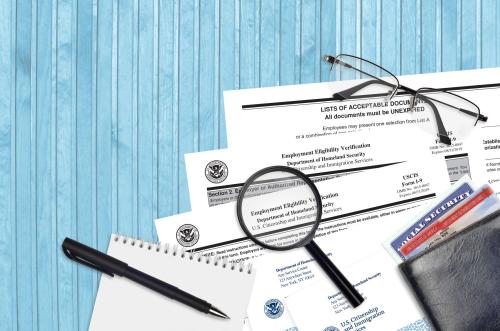Apprenticeship has a strong bipartisan appeal as part of the solution to current and future workforce challenges. President Trump released an executive order to expand apprenticeship in 2017 and created a task force to support that expansion. More recently, the bipartisan Omnibus Appropriations Act of 2018 increased federal funding for apprenticeship. Meanwhile, efforts seeded by the Obama administration continue to support the growth of apprenticeship at the state and local levels. And in 2018, eight governors, including Republicans and Democrats, specifically referenced apprenticeship in their State of the State Address as a workforce strategy, and many more referenced the value of work-based learning.
It is certainly good news that more policymakers are on board with expanding apprenticeship, but since the whole point of apprenticeship is to provide paid, work-based learning experiences, more employers need to get on board as well. After all, they’re the ones with the jobs.
The research is clear that apprenticeship programs benefit both workers and businesses. By combining classroom instruction with paid, on-the-job training under the guidance of a mentor, apprenticeship programs help workers gain valuable skills leading to good jobs and careers, and help employers meet their workforce needs, streamline the hiring process, and reduce attrition. An oft-cited report from the U.S. Department of Commerce and Case Western Reserve University found that apprenticeship programs produced returns on investment of 40 to 50 percent. Other research found that participants in apprenticeship programs have substantially higher earnings relative to nonparticipants. At a time when American employers say they can’t find workers with the skills they need, and job seekers say they can’t find good jobs, apprenticeships can be part of the solution.
However, the size and scope of apprenticeship programs in the United States are limited. According to the U.S. Department of Labor, there are just over 440,000 active apprentices as of September 30, 2017. A small fraction of the American population participate in apprenticeship programs compared to other developed countries.
Public policy can support apprenticeships, and educational institutions and unions can be crucial partners, but the threshold criteria for an apprenticeship to succeed are an employer with a job, coupled with a willingness to invest time and money in developing their employees.
Research and experience shows that many employers do not have well-developed internal systems to find and develop talent. Human resources operations are often more operational than strategic, focusing on payroll, on-boarding, and compliance. Companies do not always have the capacity to identify current and future skill needs, target their recruitment efforts more strategically, or carry out succession planning. And the benefits of apprenticeship are not always clear to employers, or at least may seem abstract compared to the up-front work of creating such a program. Therefore, running an apprenticeship program that requires longer-term strategies and resources can be difficult for employers.
The good news is that employers do not need to run apprenticeship programs entirely on their own. By developing policies and incentives to support apprenticeship, states play a significant role in bringing together partners to develop solutions that help their residents find good jobs and their businesses find good workers.
For example, the South Carolina Technical College System runs Apprenticeship Carolina, which features a small team of apprenticeship consultants who support employers through the registration process and help them take advantage of tax credits and other financial incentives. The Wisconsin Department of Workforce Development has Apprenticeship Training Representatives who are available to provide businesses with one-on-one technical assistance.
Other states are also creating more robust linkages between education, workforce, and industry. In 2017, Washington Governor Jay Inslee created the Career Connect Washington Task Force, co-chaired by the president of Microsoft and the chair of the Washington Workforce Training and Education Coordinating Board. The task force provided recommendations to Governor Inslee that included expanding pre-apprenticeship, apprenticeship, and youth apprenticeship programs. Montana Governor Steve Bullock created a joint liaison between the state’s labor agency and university system to ensure a better alignment of content taught in schools and skills employers need. This alignment, in combination with a tax credit awarded to businesses that hire apprentices, helped the state grow its apprenticeship programs by 30 percent in the past five years.
To continue being part of the solution to addressing current and future workforce challenges, employers must be willing and able to operate differently. As a manufacturing executive who helped develop the Kentucky FAME training program explained, “The employers were such a part of the problem for so long. All we did was complain, but we never jumped in to tell people what we needed.”
The key to apprenticeship expansion is enabling and equipping employers to be the drivers. This means that federal, state, and local actors in the public and social sectors must also be willing to operate differently. The examples cited above show that many are willing to do so. In short, while apprenticeship programs require time and effort to develop, the results are worth the effort. What is necessary is the willingness to act.
Kimberly Hauge is a Senior Policy Analyst with the NGA Center for Best Practices.







Commentary
States equip employers to drive apprenticeship
April 23, 2018